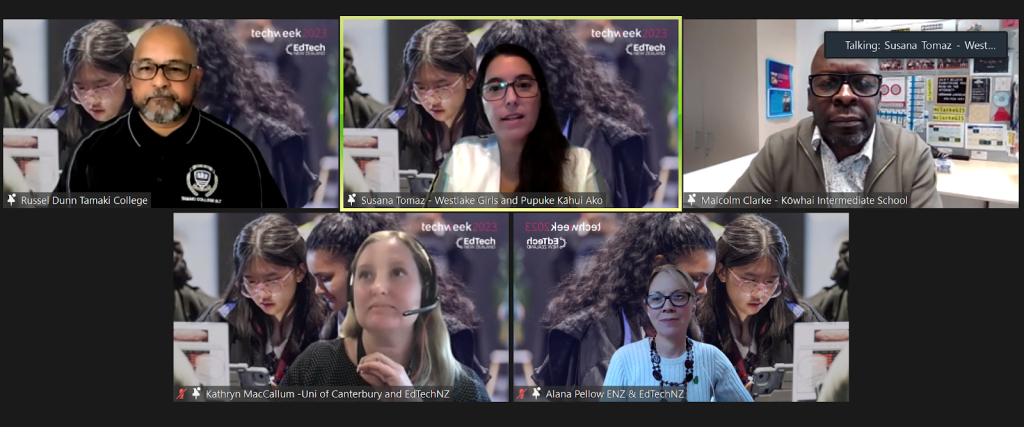
The New Zealand Tech Alliance is a group of independent technology associations from across New Zealand that work together to ensure a strong voice for technology.
Visit Tech Alliance

The New Zealand Tech Alliance is a group of independent technology associations from across New Zealand that work together to ensure a strong voice for technology.
Visit Tech Alliance
Susana Tomaz | STEAM Coordinator Westlake Girls High School | Across School Lead – Pupuke Kāhui Ako at Ministry of Education of New Zealand
An Ecosystem Approach to Education: Bridging Pathways, Empowering Teachers, and Cultivating Digital Innovators of Tomorrow, Locally
In today’s rapidly evolving world, integrating digital technologies into the curriculum has become essential to prepare students for the future. However, we cannot ignore the disconnect between teachers, the educational community, and the EdTech community as to the provision and enablement of educational technologies in schools.
This month’s blog post provides further insight into the kōrero on “Breaking the Barriers: A Teacher Panel on Digital Technology in Education which took place on Tuesday 16 May, as part of TechWeek. The recording of the kōrero session facilitated by Kathryn McCallum, Associate Professor of Digital Edu Futures and President of the International Association of Mobile Learning (IAmLearn) can be found here.

Our expert panel consisted of Malcolm Clarke, Digital Technologies Teacher at Kōwhai Intermediate School and President of DTTA (Digital Technologies Teachers Aotearoa), Russel Dunn, Deputy Principal aligned to Curriculum Design at Tamaki College and Susana Tomaz, STEAM Coordinator at Westlake Girls High School and Across School Lead for the Pupuke Kāhui Ako/Community of learning encompasses nine schools and 19 ECEs. The panellists provided valuable insight through different lenses into the challenges educational institutes face today enriched by participants’ online discussion.
Key points of the kōrero highlighted the importance of lifting the profile of Digital Technology as a learning area and creating pathways for training in New Zealand as a “Digital Tech” teacher, which does not exist. Other key points focused on the importance of building non-digital specialist teachers’ capabilities, in a sustainable way, to enable effective integration of technology across learning areas through STEAM pedagogy; promoting equality and diversity in STEAM/Tech pathways; fostering collaboration with the industry and parent communities for curriculum co-design. This collaboration ensures that the curriculum aligns with industry needs and equips students with relevant skills, encouraging students to become active creators rather than passive consumers of technology. Incorporating design thinking and project-based learning methodologies into the curriculum enables students to tackle real-world challenges. By embracing tinkering, play, and exploration, students can develop authentic and curiosity-driven learning experiences.
Through partnerships with iIndustry, internships and work-study programs can be established, allowing students to earn while they learn, providing valuable real-world experiences. Fusion Networks is already growing its talent locally. The challenge is how to scale that sustainably and get all industries on board and operating in the same way.
A good starting point for now is to reach out to schools in the community and start bridging connections, their students are your future workforce.
No doubt that integrating digital technologies across the curriculum empowers teachers, engages students and prepares them for the ever-evolving world. To achieve successful integration, it requires an ecosystem approach involving educators, industry partners, parents, and the Ministry of Education. By investing in teacher training, nurturing diverse talent, and co-designing with students, we can create a vibrant EdTech landscape that cultivates critical thinking, creativity, and problem-solving skills, ultimately contributing to the economic growth and social well-being of New Zealand and the wider World.